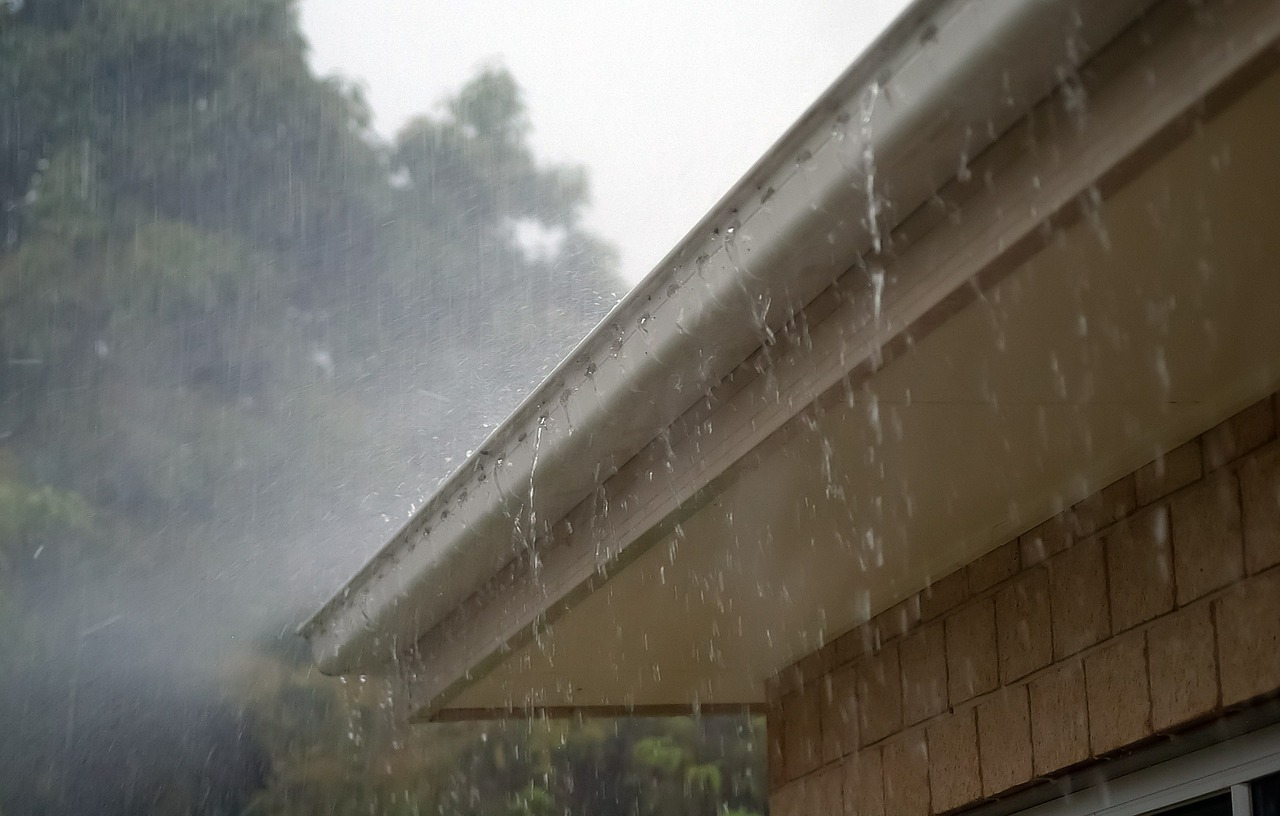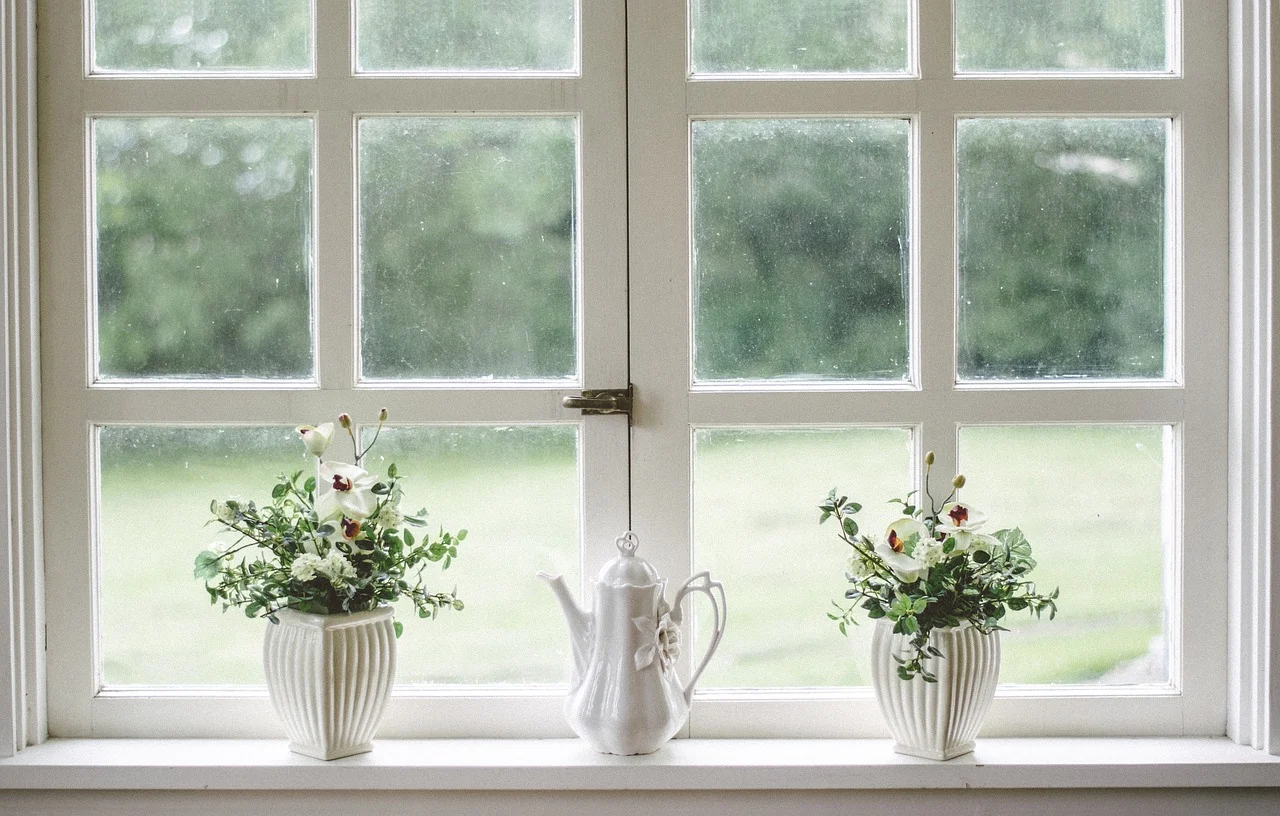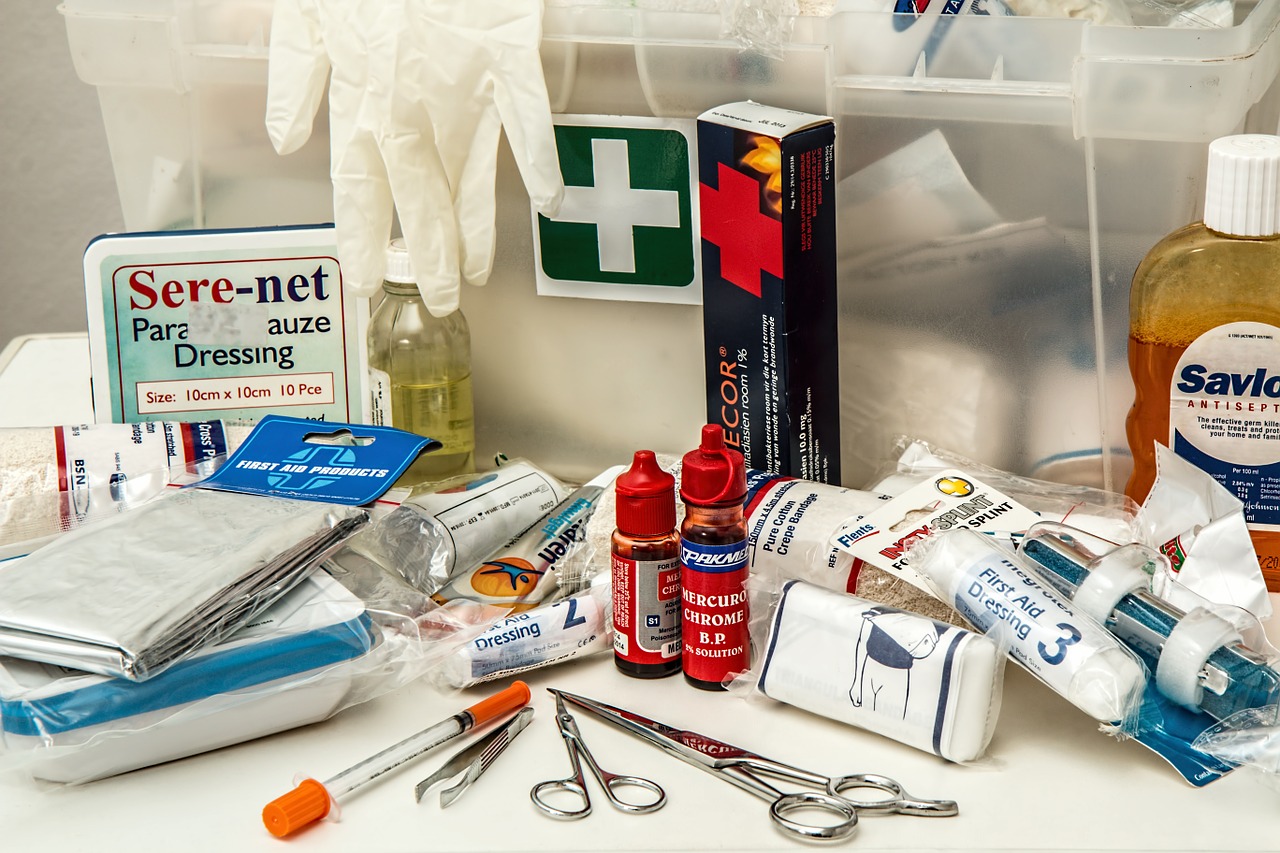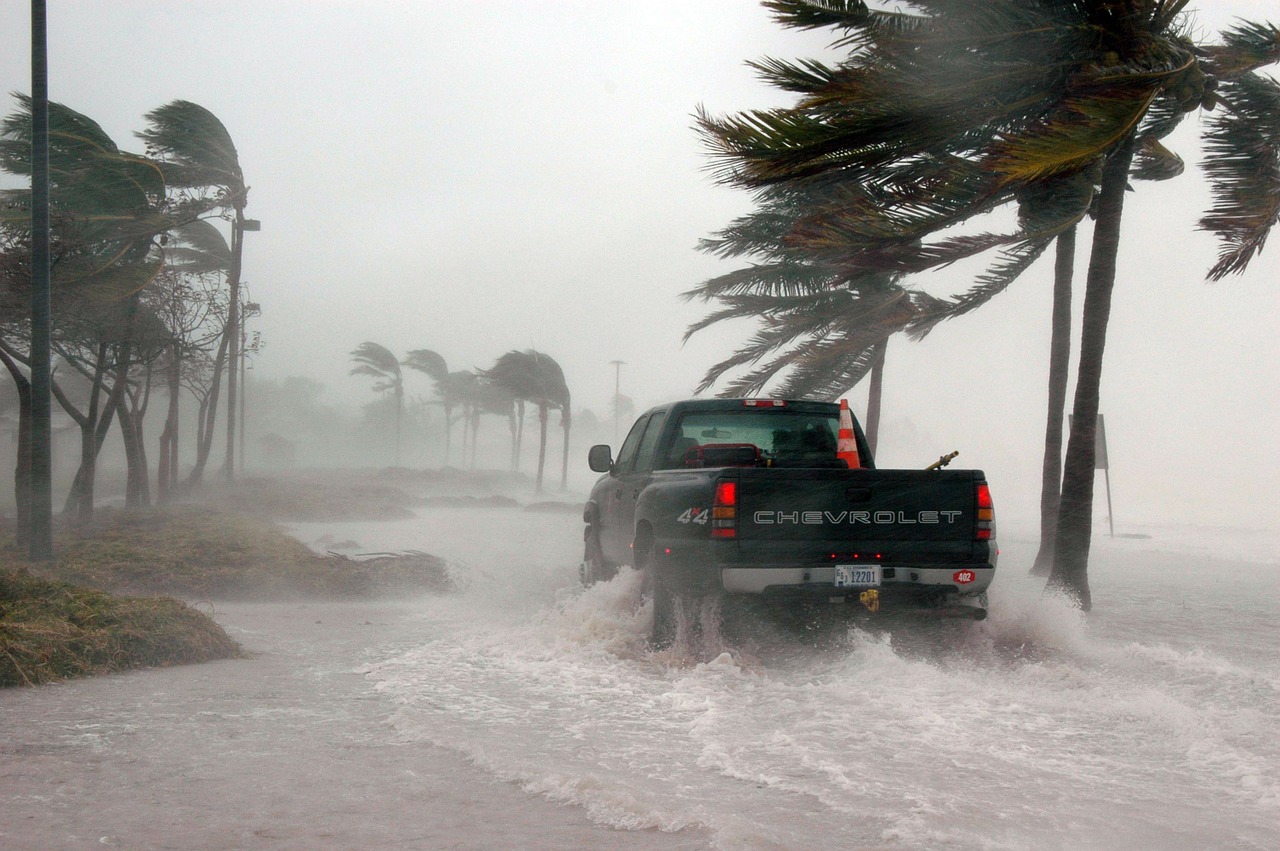
How To Prepare Your House For Heavy Rain 18 Steps
By: 911 Water Damage Experts
1. Clean Your Gutters And Downspouts
If your house is beneath many trees, it’s important to clear the gutters at the beginning of the season, and then clean them again after the first rain to remove leaves and debris that wash down from the roof.
Remember, when gutters and downspouts clog with leaves and debris, water overflows and spills down where it can damage walls and footings.
You can find gutter cleaner poles and kits here and have them delivered to you if you are currently without any gutter cleaning tools and equipment.
2. Check Your Roof, Skylights, And Flashing
The first step is to look for a roof leak during the day.
Then, into the attic with a bright flashlight but be cautious and step only on secure framing members.
Never step on the insulation or topside of the ceiling below because neither of these will support you.
Start above the place where the drip has occurred and work your way up the roof, looking for wetness along the framing members.
If the weather has been dry for a while, look for watermarks, stains, or discolorations on the wood made by moisture. Then switch off the light and try to find a hole where daylight shows through the roof.
If it’s still raining, put a bucket under the leak in an area with proper support.
Let the bucket collect the drips and fix the leak when the weather clears.
With a wood-shingle roof, you’ll see many such places, but while the overlapped shingles let light show through they shed water.
3. Repair Gutters And Downspouts
Fix loose, sagging, or leaking gutters and make sure downspouts carry drainage well away from the house.
Four of the most common problems rain gutters incur are leaking, sagging, overflowing, and pooling runoff around the house. If left unattended, any one of these conditions can cause serious water damage to the house and its foundation.
Luckily, these fixes are within the realm of even a modestly skilled do-it-yourselfer.
If your gutters are leaking, the prime suspects are the joints between sections.
Standing water in gutters eventually will rust galvanized steel seams or seep through the seams in aluminum gutters.
You can find new gutter equipment here and have it shipped to you.
4. Inspect The House Siding
Check for damage, cracks, and holes.
Seal up leaks with a paintable option or clear caulk. Also, the paint must be in good condition. If it isn’t, consider getting the house painted before winter really sets in.
5. Weatherstrip Windows And Doors
Weatherstripping reduces drafts and blocks energy loss through windows and doors. The right weather stripping, when installed correctly, can pay off significantly in energy savings.
When it comes to a home’s energy loss caused by air leaks through windows, doors, and walls. This is called infiltration and it occurs when old windows and leaky doors are serious offenders.
Typically, if you hear windows rattle on a windy day, feel drafts blowing, or see light between the moving parts of a window or exterior door, that means expensively-heated or cooled air is escaping your home.
When winter hits, you’ll most likely get uncomfortable drafts and increased heat in the summer.
6. Prepare Or Install Storm Doors And Windows
If your home has a combination storm/screen door with interchangeable glass and screen panels, switch from screens to glass.
Try using a WD-40 Specialist high-performance silicone lubricant.
It removes moisture and ensures excellent lubrication, protecting and extending the life of your tools and equipment. You can even use it on metal, plastic, and wood, without leaving a stain.
Be sure the door is adjusted and working smoothly.
7. Need A Sump Pump?
You may need to buy a sump pump if your basement or crawl space is susceptible to flooding. If your home already has one, check to see if it’s in good working order.
8. Consider Buying A Generator
A portable emergency generator can provide enough power to keep a few important lights and appliances running. A whole-house standby generator will automatically kick on to keep the whole house powered.
You can find new generators online here and other generator alternatives.
9. Cover And Protect
Always make sure to cover and protect outdoor furniture, barbecues, outdoor equipment, and firewood with heavy tarps. Secure the tarps with ropes or heavy objects such as bricks.
10. If Your Property Is In Danger Of Being Flooded
It’s important to have materials such as sandbags or concrete edgings on hand to divert water to drainage areas.
11. Have Trees Trimmed
If trees have been weakened by drought, it’s important that they are trimmed. When laden with rainwater, weak trees can snap or become easily uprooted.
You can find a tree trimmer online here and have it delivered to you if you don’t have one.
12. Clear Debris From Street Grates
If you live in the city double-check street grates to make sure there is no debris blocking them.
It is the city’s job to inspect the grates but clearing debris away from them can go a long way in protecting your home from water damage and sewer backup issues during heavy rainfall.
You can find a debris blower online here if you need one.
13. Store Or Cover Valuable Items
The final item for preparing the outside of your home before heavy rainfall is to store valuable items that are left outside. This includes patio furniture, garden tools, and grills. They are all at risk of damage during heavy rainfall.
Storing items in a waterproof shed is a good place to start. However, not all of us have access to a shed and so storing items inside your home is the next best option. Avoid storing valuables in the basement but find a logical solution.
For your grill, make sure if it is staying outside it is secured properly so it will not blow around or tip over and that it has a properly secured cover on it to prevent the rain from damaging or rusting it.
14. Close Your Windows And Doors
Although this may seem obvious it sometimes gets overlooked. Make sure to close any windows or doors that may be open.
Also, move away any furniture or electronics that are near windows because even when they are closed water can still find its way in and cause damage to nearby items.
Remove any valuables and furniture from the basement level as this is the area that is most exposed during a heavy rain storm.
15. Prepare An Emergency Kit
Cell phones should be charged, flashlights should have new batteries in them, and ensure there is food and water in an accessible area. With heavy rainfall can often come thunderstorms that can knock your power out.
Preparing a bag of dry clothes and an emergency kit is a good idea in case you are without power for an extended period.
If there are any essential medications it is a good idea to make sure they are easily accessible for all household members.
Creating a plan and preparing supplies is important for your family’s safety to make sure all members are aware of what to do and have the proper supplies to keep them safe in the event flooding occurs.
16. Be Cognizant Of Your Electrical & Gas Lines
These often are overlooked and yet they are some of the most dangerous side effects of rainfall.
Make sure you can easily turn off your electrical switch or panel. This is important to prevent potential electrocution if flooding makes its way into wall outlets or electronics.
Gas leaks can also occur if the water rises high enough to extinguish the pilot light on your furnace or water heater.
It can be difficult to cut the supply of gas to these lines in a short period of time but it is important to not use any open flames until you are absolutely certain no gas leak has occurred.
If you do suspect a gas leak it is best to leave your home entirely until an expert can evaluate the area.
Avoid driving since roadways can also be dangerous and if the roadway looks unsafe. Do not proceed and turn back to an area with higher ground.
17. Have The Proper Insurance Coverage
Water damage has become one of the most complex elements of many homeowners’ policies and is now responsible for more home insurance claims than any other exposure.
With coverage options such as sewer backup coverage, overland water, groundwater, and complete water protection it can be difficult to differentiate and determine which are important for you.
Understanding these coverages and what they protect is better left to the experts.
Seek professional help when trying to find the right insurance as there are many options out there which can be an overwhelming process.
18. Be Prepared For The Worst
Assemble a disaster supply kit, and have it readily accessible.
Scan and store important documents on thumb drives or hard drives located away from your home. Sometimes, it’s easier to store things on the cloud.
Additionally, consider flood insurance. For example, be aware that your home may become flooded even if it isn’t located in a high-risk area. Do some online research on how to prepare for a storm.
If you have any questions about our article, “How To Prepare Your House For Heavy Rain: Ultimate 18 Step Guide” or weather damage restoration, feel free to call us at 1-833WE-DRY-IT anytime 24/7/365 all the time. We’re there when you need us!
Related Posts
How to prevent weather damage during a storm
The dangers of a leaky roof and what to do when you find a leaky ceiling
10 helpful smoke damage cleaning tips
Restaurant flooded? Here’s how to deal with a restaurant flooding
What’s causing mould in your home? Here are the top reasons why
How to prevent mould growth after a flood
A pipe burst in my business building – what do I do?
What to do when a water pipe bursts in your apartment
Hire the right mould removal company by asking these vital questions
15 interesting facts about mould
What causes mould damage and what you can do about it
Top common signs of water damage: here’s what to look for





